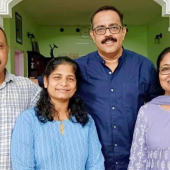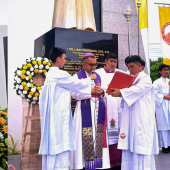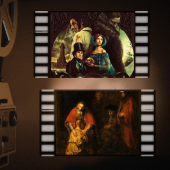Mentor, evangelizer promotes awareness for nature, self through fluid art
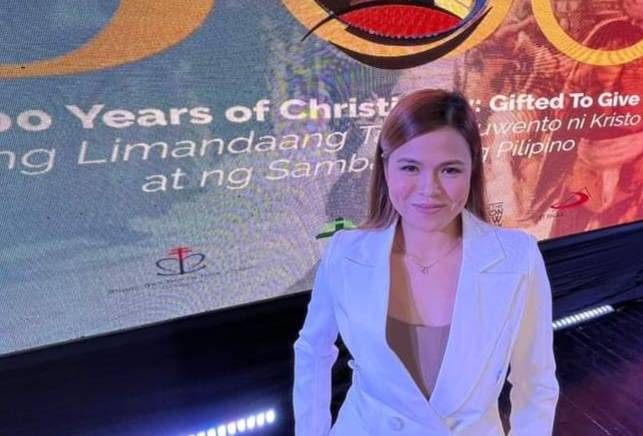
A round shape in a fluid artwork may appear to an environmentalist to be Mother Earth, a sunflower in full bloom to a florist, a sturdy disc wheel to a cyclist, or a balloon to a child's eye.
Michelle Sto Tomas, who teaches Mass Communication at UP Los Banos, Department of Humanities, has observed that people look at her fluid artworks from different standpoints, leading them to sundry interpretations of a single piece, which makes this particular art interesting.
"Fluid painting may look new to some people," Michelle explained. "But it has been around for a long time, especially in other countries. It's very abstract art."
Also known as flow art, fluid painting is widely accepted to have originated by David Alfaro Siqueiros, a Mexican realist painter and political activist, who called it "accidental painting." Some refer to it as "liquid art."

Love nature
Sto Tomas harnesses her talent for art to promote awareness of nature and eventually love of it. And to love nature is to protect it.
The Sierra Madre, the longest mountain range in the Philippines, has recently protected millions of Filipinos from Super Typhoon Karding (Noru).
The mountain range, spanning over 500 kilometers, starts in Cagayan, a province in northern Luzon, and culminates in Quezon, a province in southern Luzon. It traverses 10 provinces, providing millions of people with a shield from the strong winds of typhoons blowing from the Pacific to the west.
However, in recent years, the Sierra Madre has been harmed by illegal logging, mining, and destructive land use, which has caused soil erosion and flooding in low-lying areas surrounding the mountain range.
Sto Tomas protects nature through her art. By protecting nature, she also protects people, in effect.
"I wish people would come to love nature through my piece," said Sto Tomas, who hails from Cavite, a province about 30 kilometers south of Manila and home to Filipino resistance during the Spanish colonial rule.
Sto. Tomas has also noticed that when people look at her fluid paintings, they can see Christ, his cross, rocks, the sea, and other things on the canvas that she has not depicted.
"Fluid art allows you to make your own meaning of art," she said.
In December 2021, she staged her first-ever solo art exhibit, showcasing eight pieces of hers at the Met Live Art Atrium in Pasay, Manila.
And in June 2022, she joined an art show in Boracay: 50 Shades of Blue. The art exhibit was deemed the biggest so far in Boracay, featuring pieces by 50 artists. The show ran from June 10 to July 31. Boracay, a resort island in Western Visayas, is a premier eco-tourism destination in the country.
As an asthmatic, Sto Tomas needs to wear a mask or a respirator while painting. The fluid painting uses acrylic paint. It could also make use of silicone oil, a blow torch, alcohol ink, and varnish.
Through her art, Sto Tomas communicates with people artistically to make peace with the past, acknowledge the present, and come together and work for the common good of men.
"In reconciliation with the past, in recognition of the present, we reassemble for the future," she noted.
Before doing fluid art, Sto Tomas was into brushes and acrylic. She started doing fluid painting during the pandemic. And now, she's honing her skills in texture painting.
"I always love doing something new," she said.
To her, art is a mentor. It imparts knowledge and empowers the individual.
"I don't have that much patience, but painting teaches you to have a lot of it."
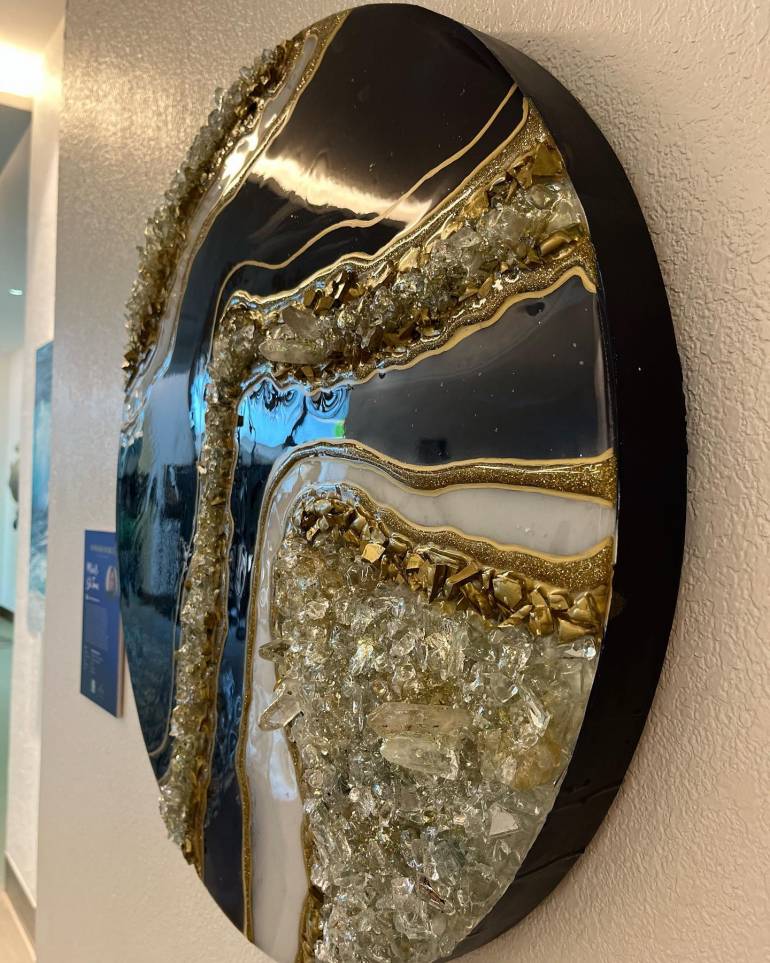
Love self
Through her pieces, Sto Tomas wishes to inspire others to keep believing in themselves, and to keep chasing their dreams.
"I like to inspire other people with their respective passions through art," she said.
She also holds that art has the power to open the eyes and replete the person with energy, especially during a crisis like the pandemic that threatens mental health and tempts people to fall on their knees.
She wishes to tell and retell that life is a wonderful gift.
"Art gives hope," she said. "It offers us an opportunity to see the beauty of life."
To her, art is about hope, and it should keep reminding others to believe in life and relish the beauty in it.
"The role of art in society, religion, and people is to tell a story of hope," she noted. "And to tell everyone to believe in themselves."
Sto Tomas observed that many things around us can put one's spirit down and that everyone should attend to their needs.
She reminded us that "all the issues in society affect us. Give yourself enough time."
In one of her social media posts, Sto Tomas wrote: "So many battles we are fighting today. Do not forget to breathe, pause, and take care of yourself. I started my day with a cup of good coffee because it makes me happy."
In another social media post, she also said, "When the body is confined to four walls, but there is so much noise, and noise in the head is hardly noticed, hardly discerned. Heed the warnings no one understands. This is a battle. Protect that peace."
Sto Tomas also has an evangelization program on radio, which she co-hosts on Saturdays. Dubbed DArt of the Heart" on DZRV 846, the program started during the pandemic.
She graduated in Mass Communication from St. Paul University. She's a Master of Arts Major in Public Administration from the University of Santo Tomas.
Currently, she's finishing her Ph.D. in Mass Communication at UP Diliman while teaching Mass Communication at UP Los Banos, Humanities Department.
Radio Veritas Asia (RVA), a media platform of the Catholic Church, aims to share Christ. RVA started in 1969 as a continental Catholic radio station to serve Asian countries in their respective local language, thus earning the tag “the Voice of Asian Christianity.” Responding to the emerging context, RVA embraced media platforms to connect with the global Asian audience via its 21 language websites and various social media platforms.












